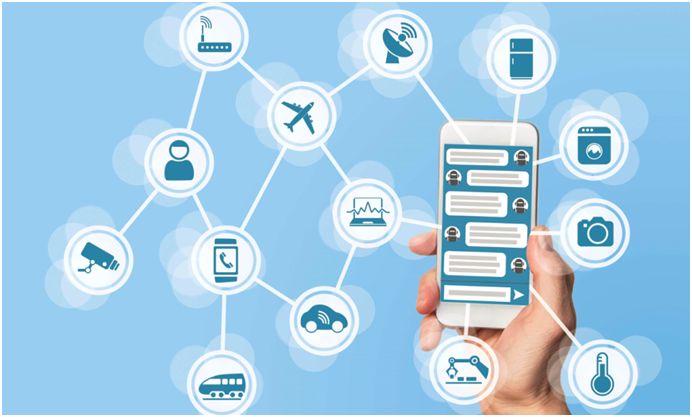
Adam Friedman and Ryan Donley examine AI-driven conversational commerce, which was growing technology in 2018 and 2019 and is experiencing rapid growth in 2020 due to the pandemic.
With lockdowns eliminating in-person sales calls and trade shows, conversational commerce is becoming the new go-to technology especially for high-end products like 3D printed materials, chemicals and metals, where customers have specific questions and reviewing a website isn’t ideal.
| Sales Medium | Strengths | Weaknesses |
| Traditional Websites | Can be very informative No human contact | Not ideal for fielding expert knowledge and answer specific questions |
| In-Person Retain Trade Shows | Enables actual product presentation Provides expert knowledge | Requires actual human contact |
| Conversational Commerce | Provides expert knowledge Can answer specific questions No human contact | New technology and requires the seller to input relevant expert knowledge data |
Strengths and weaknesses of three different sales mediums
Chief Executive Officer Robert LoCascio of LivePerson, a public company focused on conversational commerce, recently had an interview with Bloomberg Television. Mr. LoCascio mentions the role of automation and machines on customer service call lines and web sites. LivePerson automates conversational commerce that allows AI-powered chatbots to answer consumer questions, all along with the guidance of human customer service staff that can perform the job that automated AI systems cannot execute. LivePerson, whose clients include Vodaphone, T-Mobile and Citibank, generates 50,000,000 chats a month for the client’s customer service systems. Mr. LoCascio cites the 80/20 rule, the Pareto principle, and in his renditions of the rule for the conversational commerce industry, 80% of customer service staff communication will be with Artificial Intelligence and software. The other 20% will be with referral to human support agents.
By having 20% of human service interaction, the remaining 80% can be directed through chat messaging, hyperlinks (to websites, chats and/or videos), or automated computing. According to this use of the Pareto principle, if the most important conversations, representing 20% of all customer service communication, can be handled with service agents’ care, skill and without repetition, this leaves 80% of the rest of communication to be able to be automated by computers and technology. Mr. LoCascio makes mention of the fact that voice calling has also become antiquated and most people use social media, email, text messaging, and message services like Snapchat to generate a majority if not all of their communication. Disclaimers can state that for sensitive data and transactions, human approval should be obtained and cannot just be automated by a machine. Mr. LoCascio has strong evidence that technology is shifting towards chats and bots and with less human intervention.

One of LivePerson’s biggest retail clients, Lowe’s, is another example of using conversational commerce technology. Lowe’s has recently implemented a system where employees at the store will assign photos for a hardware problem to specific employees. Employees interact with the application and once they are finished servicing the hardware equipment, the employee will write messages back that the servicing was complete. The communication between manager and employee is purely digital and taking inventory of worked-upon problems is stored in a persistent database.
The same system has been implemented for customers for rebates, credit accounts, and order accounts. Conversational commerce systems interact so, for example, if an order requires a question to be answered by a paint specialist, a photo will be submitted to the right paint specialist at the store. This same approval can be used for 3D printing material selections. Once the specialist finds the solution to the problem, the answer back to the manager will be relayed to the customer’s order system. Lowe’s has been so successful with conversational commerce, that they have parlayed their conversational commerce to robots. Lowe’s has introduced a LoweBot that navigates around stores and can answer customer’s answer with interaction on a screen. Customers do not need to interact with a store employee as the LoweBot can instantaneously give answers to specific inquiries on a screen.
The Research & Development Tax Credit
Whether it’s used for creating and testing prototypes or for final production, 3D printing is a great indicator that R&D Credit eligible activities are taking place. Companies implementing this technology at any point should consider taking advantage of R&D Tax Credits.
Enacted in 1981, the now permanent Federal Research and Development (R&D) Tax Credit allows a credit that typically ranges from 4%-7% of eligible spending for new and improved products and processes. Qualified research must meet the following four criteria:
- Must be technological in nature
- Must be a component of the taxpayer’s business
- Must represent R&D in the experimental sense and generally includes all such costs related to the development or improvement of a product or process
- Must eliminate uncertainty through a process of experimentation that considers one or more alternatives
Eligible costs include US employee wages, cost of supplies consumed in the R&D process, cost of pre-production testing, US contract research expenses, and certain costs associated with developing a patent.
On December 18, 2015, President Obama signed the PATH Act, making the R&D Tax Credit permanent. Beginning in 2016, the R&D credit has been used to offset Alternative Minimum Tax (AMT) for companies with revenue below $50MM and, startup businesses can obtain up to $250,000 per year in payroll tax cash rebates.
Conclusion
Conversational commerce has been at the forefront of automating customer service communication, especially during the COVID-19 pandemic. Many firms, like LivePerson, have transitioned to chat messaging and automatic bot technology for customer servicing. The future holds more technologies for conversational commerce technology and it is expected to create a system where the most popular communication channels, now being text and chat messaging, will predominate the overall ecosystem for customer service communication.
